How to Discover the Real Scandinavia
Travel During the Off-Season
Words and photos by Lola Akinmade
Published 1/2010. Resources updated 2/15/2024 by Transitions Abroad
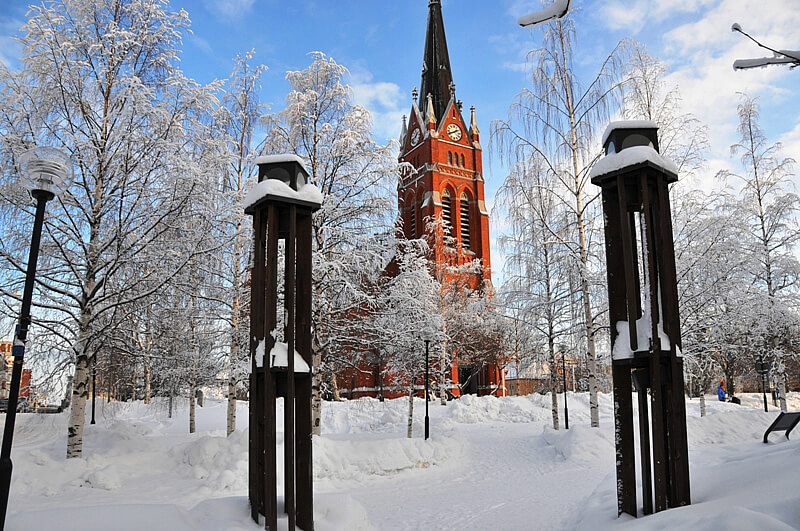 |
|
Scandinavia winter scene.
|
My first (and most likely last) foray into ice-racing close to the Arctic Circle was brutal, I found myself speeding around a crude ice track in a beat-up Volvo at 100 kilometers (60 miles) per hour, careening out of control at sharp bends, and screaming for dear life out of sheer terror.
While this level of adventure may not appeal to every traveler, this was just one of many activities I participated in while traveling off-season in Scandinavia.
Most visitors tend to flock to the Scandinavian countries of Denmark, Iceland, Norway, and Sweden during warm summer months to mill around strikingly beautiful cities such as Stockholm. They enjoy boat trips around archipelagos with thousands of islands, cruise through and hike around Norwegian fjords, and bask on beaches under hours of daylight with a barely setting sun.
During long winter months, these countries also record some of the coldest temperatures on earth with only 2-4 hours of sunlight in some regions, so visiting Scandinavia during off-season months normally isn’t an attractive option for travelers.
Even off-peak airfare deals frequently offered from airlines like Icelandair and Scandinavian Airlines with cuts as high as 40-50% off regular prices are not enough to convince travelers that shivering in below zero temperatures is worth the price, and travelers often cite such reasons for not venturing into those countries during the frigid months.
But to enjoy the “real” Scandinavia, winter is the best time to visit.
Northern Lights/Aurora Borealis
There are few places on earth where you can experience the grandeur of Northern lights and these places are located above certain latitudes. Appearing as light displays of swirling greens, yellows, and reds, Northern Lights (also known as Aurora Borealis), are usually more visible the closer one gets to the Earth’s magnetic poles. Conditions such as crisp, cold nights with cloudless, clear skies are prime conditions for witnessing these natural lightshows.
Polar Nights
A polar night lasts for over 24 hours. The sun never truly rises, and just hovers teasingly above the horizon. Prolonged days of little-to-no direct sunlight have been proven to trigger depression in locals. But for travelers experiencing long days of darkness for the very first time it can be memorable.
Since the sun never really rises, its glow casts an eerie cover over most of the land, making for some really unique landscapes.
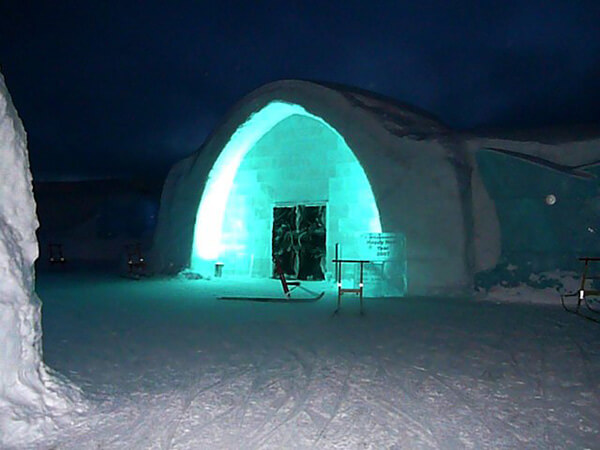 |
|
Polar nights.
|
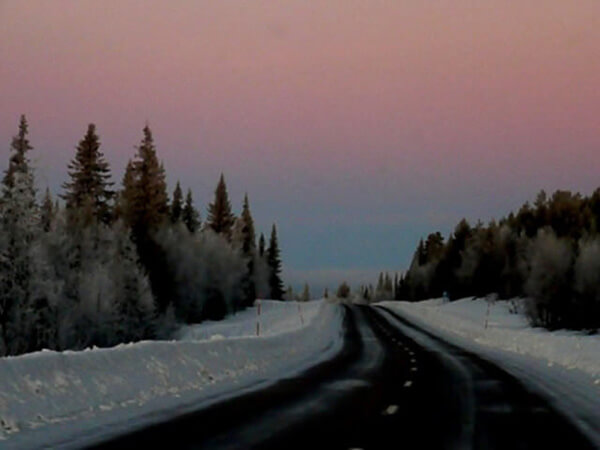 |
|
Eerie landscape.
|
Arctic Sunsets
In addition to aurora borealis and polar night landscapes, travelers may not realize that some of the most spectacular sunsets can occur outside of the tropics. As the midnight sun barely breaches the horizon, what you see are sunrays reflecting off bluish cold winter scenery to produce some unique sunsets.
The photo below was shot in Luleå, Sweden around 1 p.m. in the afternoon in late December.
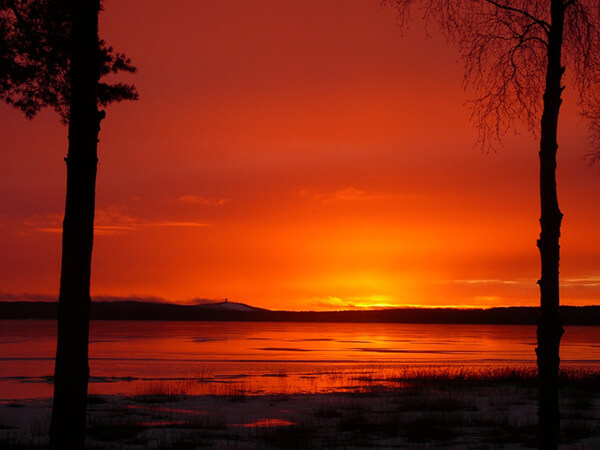 |
|
Artic sunset.
|
Offbeat Winter Activities
Come winter there are a slew of available activities such as cross-country skiing, downhill skiing, and snowboarding. Scandinavia has no shortage of prime ski locations.
Granted, skiing can be done within a traveler’s own home country or any country that also experiences the winter season, but there are a few offbeat activities that make Scandinavia more attractive during the winter.
Dog Sledding
Have you ever dreamed of partaking in your very own Iditarod race? Tour operators regularly offer multi-day dog-sled adventures that take you through backcountry roads, cutting across icy terrain and frozen lakes while partaking in a dog-sledding tradition that dates back to the 10th century. In the past, dog sleds were used to explore the frozen Arctic and Siberian tundra because their lighter weights made it easier to traverse frozen lakes and ice. The dog sleds were used by many households for hunting, gathering, and transporting supplies, and today, dog-sledding remains more of a tourist lure than for day-to-day routines.
Reindeer and Wildlife Safaris
Visiting during the off-season months means more opportunities to get closer to Arctic wildlife such as elk, elk, reindeer, foxes, and polar bears. In Norway’s Svalbard region, you can see polar bears and reindeer while snowmobiling through fjords and canyons.
Travelers to Swedish Lapland can venture into dense parklands and nature preserves with tour companies all the while keeping their eyes peeled and noses on alert for hoof prints and wild elk droppings.
Traditional working reindeer farms dot Lapland and the tourist board (listed at the end) for your destination of choice is bound to have a listing of the farms that regularly take visitors.
Ice Racing
Though not a recommended activity, daredevil travelers see automobile ice racing is a recreational activity in some parts of Scandinavia and Europe. Cars are raced across frozen ice lakes. The main danger associated with this winter activity (besides car crashes) occurs when the thickness of ice is underestimated.
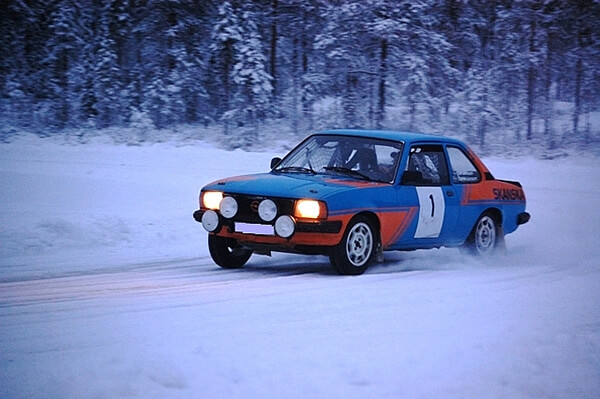 |
|
Ice racing.
|
Ice Fishing
Usually coupled with other activities such as snowmobiling and camping out, you can head out to frozen lakes to try ice-fishing. Holes are burrowed through the ice to reach water so you can sit on a stool and drop a line to catch some dinner.
Ice Hotels
Another benefit of Scandinavia in the off-season is a chance to sleep in an ice hotel. These seasonal structures entirely made from ice are built and open for business between December and early March.
Several ice hotels are sprinkled across Scandinavia. The most notable is the Ice Hotel located in Jukkasjärvi, close to the town of Kiruna in Swedish Lapland. Opened in 1990, the hotel is rebuilt every year from ice made from the Torne River. At the ice hotel, you’ll find a chapel for quick “I dos,” an Absolute Ice Bar where you can down vodka from ice glasses, and sculptures made from ice.
Ice hotels in Finland include LumiLinna Snow Hotel, Lainio Snow Village, and Igloo Village. Ice hotels in Norway include the Kirkenes Snow, Alta Igloo Hotels, and the Bjorli Ice Lodge.
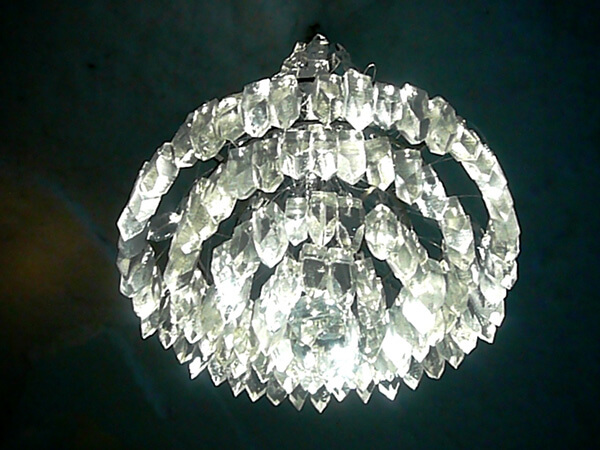 |
|
Ice chandelier.
|
Living with the Sámi
One of the oldest indigenous cultures in the
world, with roughly 80,000 natives, the Sámi people,
found mostly in the northern regions of Sweden, Norway, and Finland,
are traditionally known as nomads who herd reindeer and fish along
the coast. Travelers can spend time on Sámi farms, bed
down in native Kåta huts
or wigwams, and enjoy traditional rituals and meals such as reindeer
meat and fermented fish.
Christmas and Other Traditional Markets
A 3-hour bus ride from Swedish Lapland’s capital city Luleå will land you in Jokkmokk, where every February the village puts on a world-renown market that showcases the best of Saami culture — from relics and artifacts to indigenous delicacies and activities like dog sledding.
Scandinavian countries celebrate Christmas differently. Swedes start the holiday off with Saint Lucia day, which is celebrated on December 13th. In honor of the saint, a young girl wearing a white gown and crown of candles leads a procession of similarly clad women and girls all holding lit candles.
On Christmas Eve, a bearded gnome named Jultomte appears in Sweden, while Nisse the Elf shows up in both Norway and Denmark, all based on traditional folklore aimed at entertaining and scaring children. You can also travel up to Rovaniemi, Finland to visit the Santa Claus Village to see some elves at work in the Toy Factory and say hello to the man himself.
The Tivoli Christmas market in Copenhagen, Denmark offers arts and crafts and Christmas carols in a carnival-like setting.
Travelers can also indulge in seasonal favorites like warm glögg — a pungent mulled wine popular in the Nordic countries — and pepparkakor — crispy gingerbread cookies.
|
For More Information
Tourist Boards
The tourist boards of the Scandinavian countries are usually the best place to start for up-to-date information about activities and tours being offered in your country of choice.
Airlines
Cultural & Winter Activities
|
Lola Akinmade's photography and travel writing have appeared in National Geographic, BBC, CNN, The Guardian, Travel + Leisure, Slate, Travel Channel, Lonely Planet, Forbes, Fodor’s, AFAR, National Geographic Channel, Adventure Magazine, several in-flight magazines, New York Times. Her work can be seen at www.lolaakinmade.com.
|
